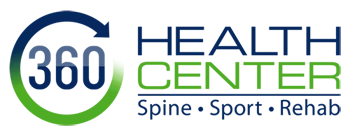
Facebook Q&A with Dr. Bencivengo, DC
“What are your thoughts on VariDesk? Should more offices be outfitted with these to combat the sitting epidemic?” – Andrew D.
The Varidesk
The Varidesk is an adjustable sit/stand desk station. It can be placed on top of your existing desk and has the capability to rise, which allows you to quickly alternate between sitting and standing while you work.
Sitting vs. Standing
Very often, my patients will ask me if sitting or standing at work is better. My answer typically lies somewhere in the middle and will vary from patient to patient, depending on his or her medical history. I am going to discuss the problems that people encounter from both sitting and standing, and I will conclude with my workplace recommendations.
“The Sitting Epidemic”
Sitting has been the most common position in the workplace for many years and is a big reason why low back pain and neck pain are so prevalent in the workforce. Sitting is a position our bodies were not intended to be in for long periods of time, let alone a majority of the day. When our muscles stay in a stretched or shortened position for long periods of time they will adapt to the position in which they are put. Muscles that are constantly being overstretched due to poor posture will begin to lengthen and weaken while muscles that are in a shortened position will become tight and painful. The postural stressors we put on our muscles when sitting will cause the muscles in the front of our chests and hips to become tight and short and our gluteal and back muscles to become long and weak. These muscular imbalances will increase our risk for back pain, neck pain, headaches, and sciatica to name a few.
Should I stand all day?
You may be wondering why you would ever sit at work again and thinking that you should stand all day. Well, the answer isn’t that simple. The added weight on our joints that occurs from standing for extended periods can lead to pain and discomfort. Add in the fact that a large percentage of the workforce have medical conditions such as arthritis, disc injuries, knee pain, or foot pain and standing for eight hours seems almost impossible to many. Standing has the benefit of forcing us to engage our gluteal muscles and core muscles more than sitting, and it also requires more energy. This extra energy expenditure leads to another problem because, plain and simple, our bodies are lazy! When we are deeply focused on our work, we aren’t likely thinking of engaging our gluteal muscles when standing or keeping our core tight when sitting. Our bodies will begin to cheat, and you may start to shift your weight to one foot when standing or slouch down in your desk chair when sitting. You may even notice that you are doing that right now! Don’t feel guilty. It is very difficult to maintain perfect posture all day, and it is a fact that desk work predisposes us to these faulty postures. Circling back to Andrew’s original question, I believe that having the capability to alternate between a sitting and standing position at work is a fantastic way to combat the postural challenges that desk work presents.
Free Health Screening
There are two great health screenings you can perform for free at home that can help you determine if you may be developing the muscular imbalances I described above.
Upper Body Screen
Stand in front of a mirror with your hands comfortably at your side. If you can see a large portion of the back of your hand in the mirror, you have likely developed upper body muscular imbalances. The short and tight chest muscles will rotate your shoulder inward and cause the back of your hand to point forward. If you have experienced neck or shoulder pain before, pay attention to the hand on the side of the injury. It would not be uncommon to find that the previously injured side turns inward more than the other. The greater the muscular imbalance, the more prone to injury you will be.
Lower Body Screen
All you need for this screen is a chair. Simply pay attention the next time you sit in a chair. Did you perform the sitting movement in a slow and controlled manner or did you plop down in your chair? If you noticed that at a certain point of the sitting motion you fell into the chair, this could be a sign that you have weak gluteal muscles. Sitting is one of the most common and important daily activities we perform, and if we cannot do this correctly we are certainly setting ourselves up for injury.
Recommendations for Sit/Stand Stations
I recommend alternating between sitting and standing every hour. Also, be sure to take 1–2 minutes per half hour to get up and move. This movement can be as simple as walking up and down the hall. Movement will help to stretch those tight muscles that are developing from desk work. Movement also has the added benefit of improving your mood and energy levels, which can help keep you productive at work. Be aware that there are many different options out there for creating a sit/stand station. You can purchase a detailed sit/stand station for several hundred dollars or you can choose a basic laptop riser for under fifty dollars. The recommendations I have made are general and will not be perfect for everyone. Be sure to talk to your doctor about any injuries you have before completely changing your work station and routine. Remember that movement is medicine and breaking up the postural stressors at work can be a great way to reduce your risk factor for developing neck and back pain. Stay healthy!
Mark N. Bencivengo, DC
360 Health Center
Dr. Mark N. Bencivengo, DC, is the owner of 360 Health Center. He earned his chiropractic doctorate from National University of Health Sciences in Lombard, IL. The mission of 360 is to maximize each patient’s health by implementing the most effective treatment techniques into customized treatment plans that are based on each specific patient’s condition.
